Ultimate Guide to Sustainable Minimalist Landscaping
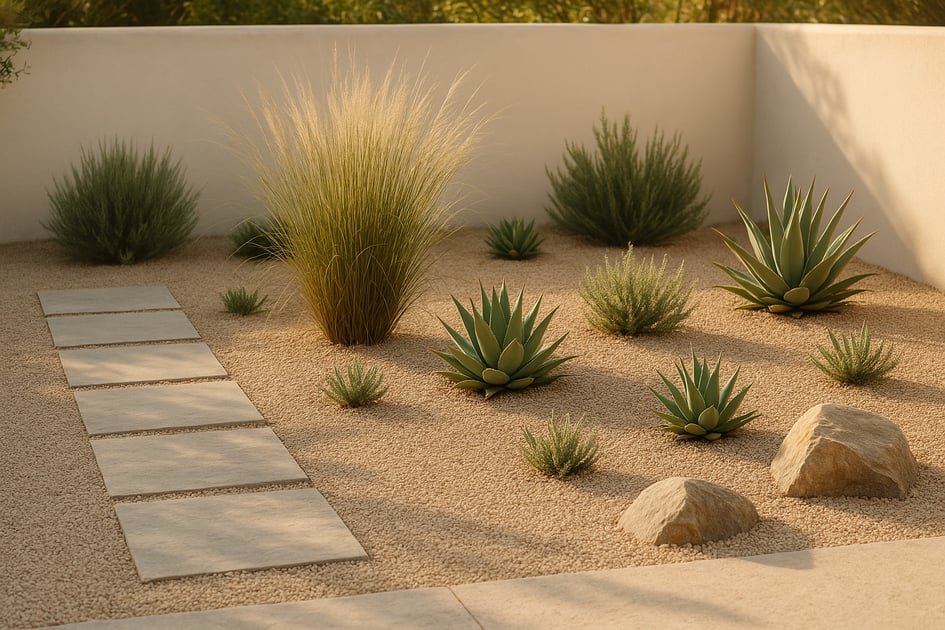
Want a stylish, low-maintenance yard that’s eco-friendly? Sustainable minimalist landscaping combines simple designs with smart, resource-saving choices. Here’s what you’ll get:
- Save time and money: Less upkeep and reduced water bills.
- Eco-friendly practices: Use native plants and water-saving systems.
- Modern aesthetics: Clean lines, functional spaces, and natural materials.
Key steps to get started:
- Analyze your yard’s sunlight, soil, and climate.
- Use native, drought-tolerant plants for easy care.
- Replace lawns with ground covers or hardscapes like gravel.
- Install drip irrigation and rainwater collection systems.
- Choose recycled or locally sourced materials for pathways and seating.
Tools like AIGardenPlanner can simplify design and plant selection, ensuring your garden thrives in your local conditions. Whether you’re starting fresh or updating, this guide covers everything you need for a practical, beautiful outdoor space.
🌿 2025 Garden Trends REVEALED! | Minimalist & ...

Planning Your Garden Design
Create a garden that’s both beautiful and easy to maintain by focusing on a minimalist approach.
Site and Climate Analysis
Start by assessing your garden’s unique characteristics. Pay attention to:
- Sun exposure: Track how sunlight moves across key areas.
- Soil quality: Test soil pH and drainage in planting zones.
- Climate conditions: Note temperature ranges and average rainfall.
Tools like AIGardenPlanner can make this process easier by using local weather and soil data to suggest plants that will thrive in your area. Use this information to guide your garden layout and plant choices.
Simple and Clean Layout Design
Minimalist garden design focuses on clean lines and uncluttered spaces. Here’s how to achieve that:
Space Division
- Define areas for seating, pathways, and planting beds.
- Incorporate open spaces to create a sense of balance.
- Keep sight lines clear for a cohesive look.
Design Flow
Stick to simple geometric shapes for a natural flow. Avoid overly complex curves that require extra upkeep. AIGardenPlanner’s design tools let you experiment with layouts and visualize how different arrangements will look in your garden. This step helps ensure every element serves a purpose.
Core Design Elements
Choose features that combine practicality with visual appeal:
| Element Type | Purpose | Sustainable Options |
|---|---|---|
| Pathways | Easy navigation | Use permeable materials for drainage |
| Seating Areas | Relaxation | Opt for recycled or locally sourced materials |
| Focal Points | Add interest | Group native plants or include water features |
| Lighting | Safety and ambiance | Install solar-powered fixtures |
With AIGardenPlanner’s plant suggestions and style options, it’s easy to incorporate these elements into your design while staying eco-conscious.
Plants and Materials Selection
Local and Easy-Care Plants
Choosing the right plants is key to creating a low-maintenance and sustainable garden. Focus on native species that naturally thrive in your area. Tools like AIGardenPlanner's AI Plant Advisor can help you find the best options based on your location and growing conditions.
When selecting plants, consider these factors:
| Plant Characteristic | Benefits | Examples for U.S. Regions |
|---|---|---|
| Drought Tolerance | Cuts down on water use | Yarrow, Black-Eyed Susan, Sedum |
| Growth Pattern | Keeps a neat appearance | Ornamental Grasses, Boxwood, Russian Sage |
| Seasonal Interest | Adds beauty year-round | Winterberry, Switchgrass, Evergreen Holly |
| Maintenance Needs | Minimizes upkeep | Native Ferns, Coral Bells, Blue Star |
These choices create a strong base for pairing plants with appropriate materials.
Eco-Friendly Building Materials
Opt for materials that align with minimalist design principles while minimizing environmental impact.
Recycled Materials
- Composite decking made from recycled materials
- Permeable pavers crafted from recycled concrete
- Reclaimed wood for raised beds or seating
Local Stone and Aggregates
Locally sourced materials reduce transport emissions and add a natural touch:
- Crushed granite for pathways
- Local flagstone for stepping stones
- River rock for drainage areas
Lawn Replacement Options
You can rethink traditional lawns by incorporating alternatives that conserve water and require less upkeep.
Ground Covers
Replace grass with low-maintenance options:
- Creeping Thyme for a fragrant, foot-traffic-friendly choice
- Sedum for drought tolerance and year-round visual appeal
- Native Moss for shaded areas
Hardscape Elements
Use non-living materials to structure your garden:
- Decomposed granite for modern, water-permeable pathways
- Gravel gardens with clean edges to create bold geometric designs
- Permeable pavers to manage rainwater while adding texture
With AIGardenPlanner's design tools, you can preview how these plants and materials will look together before making changes. The platform ensures your selections are suited to your climate while keeping the minimalist style intact.
sbb-itb-4d6a8dd
🚀 Ready to Reinvent Your Garden?
Join thousands of homeowners who have transformed their gardens using our AI design tool. Upload one photo to explore endless possibilities.
Get your AI garden designs →Garden Care Methods
Water-Saving Systems
Managing water efficiently not only conserves resources but also fits well with sleek, modern garden designs.
Drip Irrigation Setup
- Place soaker hoses under mulch for precise watering.
- Position drip emitters directly at the base of plants.
- Use smart controllers to automate watering schedules.
- Track soil moisture levels with sensors to avoid overwatering.
Rainwater Collection
Incorporate rainwater systems to make the most of natural rainfall:
- Use rain barrels that blend seamlessly with your garden's look.
- Install underground cisterns for storing larger amounts of water.
- Add rain chains to direct water flow in an aesthetically pleasing way.
- Create permeable surfaces to channel water effectively.
Strategic Mulching
Spread a 2–3 inch layer of mulch to help retain moisture, stabilize soil temperature, reduce weed growth, and neatly define garden edges.
Once your water-saving systems are in place, you can shift your attention to natural approaches for pest control.
Natural Pest Control
Eco-friendly pest management pairs well with water-efficient practices. Introduce pest-repelling plants that work within your garden's clean, structured design. For instance, lavender planted near roses or marigolds along borders can naturally deter pests. Companion planting and thoughtful placement can also attract beneficial insects, adding balance to your garden ecosystem.
Smart Lighting Choices
Create a welcoming nighttime atmosphere with energy-efficient lighting options that align with a sleek, minimalist aesthetic. Use tools like AIGardenPlanner to visualize your lighting layout.
Solar-Powered Options
- Pathway lights with integrated solar panels and simple designs.
- Motion-activated lights for added security.
- Floating solar lights for ponds or pools.
- Solar-powered address markers for functional elegance.
LED Lighting Features
- Recessed lights for steps and pathways.
- Up-lighting to showcase striking plants or trees.
- Color-changing lights to enhance water features.
- Accent lighting with timers for convenience and control.
Place lighting thoughtfully to highlight key features and guide visitors through your garden.
Maintenance and Updates
Basic Care Schedule
Keep your minimalist garden healthy with a straightforward care routine. A consistent schedule ensures your garden stays in great shape while maintaining its eco-friendly design.
Seasonal Maintenance Schedule
Spring (March–May):
- Remove winter coverings
- Prune any dead branches
- Add a fresh 2–3 inch layer of mulch
- Inspect and adjust irrigation systems
- Test soil pH and make adjustments if needed
Summer (June–August):
- Deadhead flowers once a month
- Trim hedges every 6–8 weeks
- Deep water during dry spells
- Keep an eye out for pests
- Pull weeds before they seed
Fall (September–November):
- Rake fallen leaves weekly
- Cut back perennials
- Reduce watering frequency
- Protect delicate plants
- Service irrigation systems for winter
Winter (December–February):
- Clear snow and check winter protections
- Prune selectively as needed
- Start planning updates for the next growing season
These regular tasks help maintain the clean look and eco-conscious nature of your garden while supporting its overall health.
Making Garden Changes
Routine care sets the stage for thoughtful garden updates. You can make changes gradually without disrupting its minimalist design.
Evaluate your garden for any performance issues, such as shifting sunlight, changing water needs, or lifestyle adjustments. Tools like AIGardenPlanner allow you to visualize potential changes, ensuring they fit your sustainable goals before implementation.
Smart Planning with AIGardenPlanner
AIGardenPlanner offers tailored recommendations based on your location and specific conditions. Its AI Plant Advisor feature suggests plants that complement your minimalist style and thrive in your climate.
Budget-Friendly Updates
Make changes in manageable steps:
- Begin with essential adjustments
- Test new plants in smaller sections
- Expand successful additions gradually
- Modify irrigation systems as needed
For more detailed guidance, AIGardenPlanner’s Pro plan costs $21/month (billed annually). It includes advanced planning tools and growing guides to help you avoid costly mistakes.
Tracking Progress
Monitor these key factors to ensure your updates are working:
- Plant health and growth
- Water usage trends
- Time spent on maintenance
- Seasonal garden performance
- Overall visual appeal
Keeping an eye on these indicators helps you make informed decisions about future updates. By staying intentional with your changes, you can preserve both the design and sustainability of your minimalist garden.
Summary
Sustainable minimalist landscaping combines eco-friendly practices with sleek, modern design to create outdoor spaces that are both low-maintenance and visually appealing, while also being mindful of their environmental footprint.
Careful planning is key. Choosing the right plants and installing efficient irrigation systems can drastically cut water usage. Using native plants strategically not only adds year-round beauty but also keeps maintenance needs to a minimum.
AIGardenPlanner’s AI-powered platform simplifies the design process. By analyzing garden photos, it generates professional designs tailored to local conditions. Its AI Plant Advisor recommends plants suited to your climate, helping ensure a thriving, sustainable garden.
Key Advantages:
- Lower maintenance needs
- Reduced water usage
- Increased property value
- Positive environmental impact
- Year-round visual appeal
These benefits highlight why sustainable minimalist landscaping is a smart choice for improving your outdoor space.
Essential Strategies for Success:
- Conduct a detailed site analysis
- Choose plants suited to your climate
- Install water-efficient irrigation systems
- Maintain your garden regularly
- Make thoughtful updates over time
As discussed earlier, regular care and strategic updates are crucial for keeping your garden both beautiful and eco-friendly. Whether starting fresh or enhancing an existing space, following these principles ensures your outdoor area remains functional, stylish, and environmentally conscious.
Sustainable minimalist landscaping is an evolving process. With consistent maintenance and well-considered updates, your garden can stay true to minimalist ideals while meeting both aesthetic and ecological goals. Modern tools and proper care make it possible to create a space that’s as practical as it is beautiful.
FAQs
How can I find the best native plants for my garden based on my local climate and conditions?
To identify the ideal native plants for your garden, consider factors like your local climate, soil type, and sunlight exposure. AIGardenPlanner simplifies this process by providing personalized plant suggestions tailored to your location, climate zone, and preferences. You’ll also receive detailed growing guides and care instructions to help your plants thrive in your specific environment.
How can I incorporate a rainwater collection system into my garden design?
Integrating a rainwater collection system into your garden is an excellent way to conserve water and promote sustainability. Start by identifying areas in your garden where rainwater naturally collects, such as low spots or near downspouts. You can install rain barrels at the base of gutters to capture runoff, or set up a more advanced system like an underground cistern if you need larger storage capacity.
To make the most of collected rainwater, connect your system to a drip irrigation setup or use it to manually water plants. Be sure to select materials that are weather-resistant and safe for storing water. Additionally, consider incorporating permeable surfaces, such as gravel or pavers, to help direct rainwater toward collection points while reducing runoff.
How can I transition my traditional lawn to a sustainable minimalist landscape while preserving the existing ecosystem?
Transitioning your lawn to a sustainable minimalist landscape can be done gradually to minimize disruption to the ecosystem. Start by identifying areas of your lawn that can be replaced with native plants, drought-tolerant species, or ground covers. These plants require less water, fertilizer, and maintenance, making them eco-friendly choices.
To begin, replace small sections of your lawn at a time. For example, convert a corner into a native plant garden or add a mulched pathway. Over time, expand these areas while maintaining healthy soil and avoiding the use of harmful chemicals. Additionally, consider incorporating features like rain gardens or permeable paving to enhance sustainability.
Using tools like AIGardenPlanner can simplify the process. It offers personalized plant recommendations based on your location and climate, helping you design a landscape that aligns with your goals and supports local biodiversity.
🎨 Visualize Your Dream Garden Today!
Transform any outdoor space into a professional landscape design in minutes. Just upload a photo, choose your style, and let our AI do the rest.
Start your garden transformation now →Related posts
Related Articles
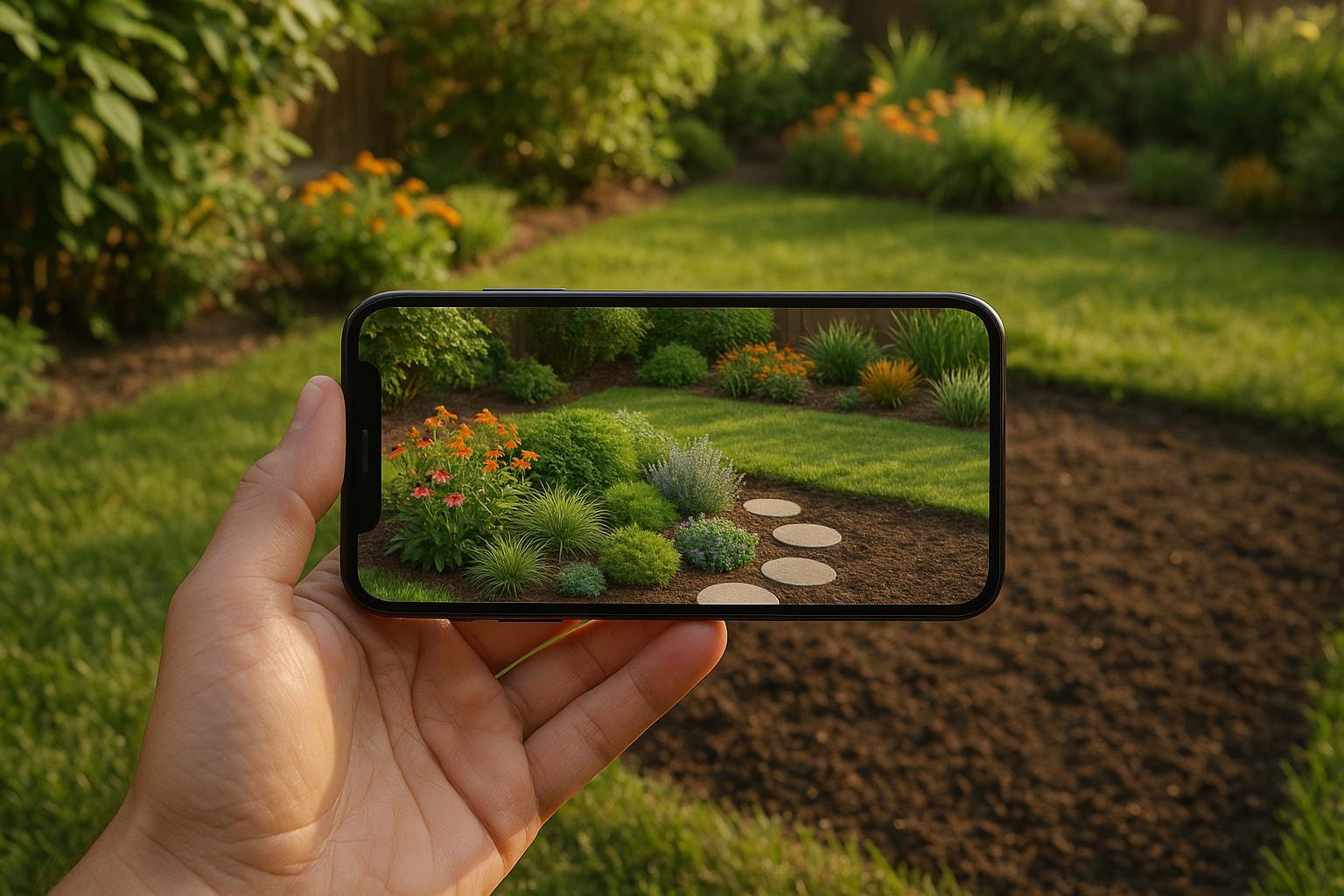
How AR Previews Transform Garden Planning
Explore how Augmented Reality is revolutionizing garden planning with real-time visuals, precise measurements, and personalized plant guidance.

How AI Predicts Soil Nutrient Depletion
AI technology predicts soil nutrient depletion, optimizing fertilization and enhancing plant health while saving time and resources.
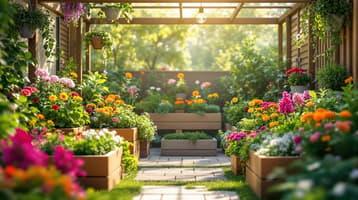
Seasonal Planting Trends: AI Insights for 2025
Explore how AI is revolutionizing gardening in 2025 with smarter plant choices, eco-friendly practices, and resilience against climate challenges.
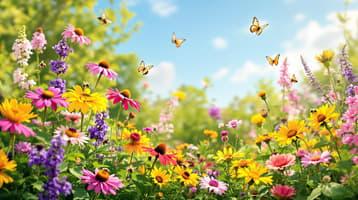
Best Plants for Pollinators by Climate Zone
Select the best plants for pollinators based on your climate zone, with specific recommendations and care tips for each region.

AI Tips for Sun and Shade Plant Pairing
Transform your garden with AI tools that simplify sun and shade plant pairing for a thriving mixed-light garden.
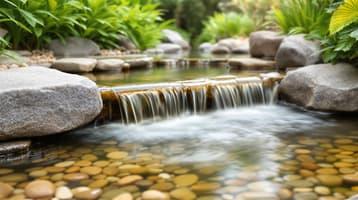
Ultimate Guide to Zen Garden Water Feature Care
Maintain the serenity of your Zen garden water feature with essential cleaning, seasonal care, and troubleshooting tips for lasting beauty.